Preface
Contents
1 Sources and Characteristics of Remote Sensing Image Data
1.1…Energy Sources and Wavelength Ranges
1.2…Primary Data Characteristics
1.3…Remote Sensing Platforms
1.4…What Earth Surface Properties are Measured?
1.4.1 Sensing in the Visible and Reflected Infrared Ranges
1.4.2 Sensing in the Thermal Infrared Range
1.4.3 Sensing in the Microwave Range
1.5…Spatial Data Sources in General and Geographic Information Systems
1.6…Scale in Digital Image Data
1.7…Digital Earth
1.8…How This Book is Arranged
1.9…Bibliography on Sources and Characteristics of Remote Sensing Image Data
1.10…Problems
2 Correcting and Registering Images
2.1…Introduction
2.2…Sources of Radiometric Distortion
2.3…Instrumentation Errors
2.3.1 Sources of Distortion
2.3.2 Correcting Instrumentation Errors
2.4…Effect of the Solar Radiation Curve and the Atmosphere on Radiometry
2.5…Compensating for the Solar Radiation Curve
2.6…Influence of the Atmosphere
2.7…Effect of the Atmosphere on Remote Sensing Imagery
2.8…Correcting Atmospheric Effects in Broad Waveband Systems
2.9…Correcting Atmospheric Effects in Narrow Waveband Systems
2.10…Empirical, Data Driven Methods for Atmospheric Correction
2.10.1 Haze Removal by Dark Subtraction
2.10.2 The Flat Field Method
2.10.3 The Empirical Line Method
2.10.4 Log Residuals
2.11…Sources of Geometric Distortion
2.12…The Effect of Earth Rotation
2.13…The Effect of Variations in Platform Altitude, Attitude and Velocity
2.14…The Effect of Sensor Field of View: Panoramic Distortion
2.15…The Effect of Earth Curvature
2.16…Geometric Distortion Caused by Instrumentation Characteristics
2.16.1 Sensor Scan Nonlinearities
2.16.2 Finite Scan Time Distortion
2.16.3 Aspect Ratio Distortion
2.17…Correction of Geometric Distortion
2.18…Use of Mapping Functions for Image Correction
2.18.1 Mapping Polynomials and the Use of Ground Control Points
2.18.2 Building a Geometrically Correct Image
2.18.3 Resampling and the Need for Interpolation
2.18.4 The Choice of Control Points
2.18.5 Example of Registration to a Map Grid
2.19…Mathematical Representation and Correction of Geometric Distortion
2.19.1 Aspect Ratio Correction
2.19.2 Earth Rotation Skew Correction
2.19.3 Image Orientation to North--South
2.19.4 Correcting Panoramic Effects
2.19.5 Combining the Corrections
2.20…Image to Image Registration
2.20.1 Refining the Localisation of Control Points
2.20.2 Example of Image to Image Registration
2.21…Other Image Geometry Operations
2.21.1 Image Rotation
2.21.2 Scale Changing and Zooming
2.22…Bibliography on Correcting and Registering Images
2.23…Problems
3 Interpreting Images
3.1…Introduction
3.2…Photointerpretation
3.2.1 Forms of Imagery for Photointerpretation
3.2.2 Computer Enhancement of Imagery for Photointerpretation
3.3…Quantitative Analysis: From Data to Labels
3.4…Comparing Quantitative Analysis and Photointerpretation
3.5…The Fundamentals of Quantitative Analysis
3.5.1 Pixel Vectors and Spectral Space
3.5.2 Linear Classifiers
3.5.3 Statistical Classifiers
3.6…Sub-classes and Spectral Classes
3.7…Unsupervised Classification
3.8…Bibliography on Interpreting Images
3.9…Problems
4 Radiometric Enhancement of Images
4.1…Introduction
4.1.1 Point Operations and Look Up Tables
4.1.2 Scalar and Vector Images
4.2…The Image Histogram
4.3…Contrast Modification
4.3.1 Histogram Modification Rule
4.3.2 Linear Contrast Modification
4.3.3 Saturating Linear Contrast Enhancement
4.3.4 Automatic Contrast Enhancement
4.3.5 Logarithmic and Exponential Contrast Enhancement
4.3.6 Piecewise Linear Contrast Modification
4.4…Histogram Equalisation
4.4.1 Use of the Cumulative Histogram
4.4.2 Anomalies in Histogram Equalisation
4.5…Histogram Matching
4.5.1 Principle
4.5.2 Image to Image Contrast Matching
4.5.3 Matching to a Mathematical Reference
4.6…Density Slicing
4.6.1 Black and White Density Slicing
4.6.2 Colour Density Slicing and Pseudocolouring
4.7…Bibliography on Radiometric Enhancement of Images
4.8…Problems
5 Geometric Processing and Enhancement: Image Domain Techniques
5.1…Introduction
5.2…Neighbourhood Operations in Image Filtering
5.3…Image Smoothing
5.3.1 Mean Value Smoothing
5.3.2 Median Filtering
5.3.3 Modal Filtering
5.4…Sharpening and Edge Detection
5.4.1 Spatial Gradient Methods
5.4.1.1 The Roberts Operator
5.4.1.2 The Sobel Operator
5.4.1.3 The Prewitt Operator
5.4.1.4 The Laplacian Operator
5.4.2 Subtractive Smoothing (Unsharp Masking)
5.5…Edge Detection
5.6…Line and Spot Detection
5.7…Thinning and Linking
5.8…Geometric Processing as a Convolution Operation
5.9…Image Domain Techniques Compared with Using the Fourier Transform
5.10…Geometric Properties of Images
5.10.1 Measuring Geometric Properties
5.10.2 Describing Texture
5.11…Morphological Analysis
5.11.1 Erosion
5.11.2 Dilation
5.11.3 Opening and Closing
5.11.4 Boundary Extraction
5.11.5 Other Morphological Operations
5.12…Shape Recognition
5.13…Bibliography on Geometric Processing and Enhancement: Image Domain Techniques
5.14…Problems
6 Spectral Domain Image Transforms
6.1…Introduction
6.2…Image Arithmetic and Vegetation Indices
6.3…The Principal Components Transformation
6.3.1 The Mean Vector and The Covariance Matrix
6.3.2 A Zero Correlation, Rotational Transform
6.3.3 The Effect of an Origin Shift
6.3.4 Example and Some Practical Considerations
6.3.5 Application of Principal Components in Image Enhancement and Display
6.3.6 The Taylor Method of Contrast Enhancement
6.3.7 Use of Principal Components for Image Compression
6.3.8 The Principal Components Transform in Change Detection Applications
6.3.9 Use of Principal Components for Feature Reduction
6.4…The Noise Adjusted Principal Components Transform
6.5…The Kauth--Thomas Tasseled Cap Transform
6.6…The Kernel Principal Components Transformation
6.7…HSI Image Display
6.8…Pan Sharpening
6.9…Bibliography on Spectral Domain Image Transforms
6.10…Problems
7 Spatial Domain Image Transforms
7.1…Introduction
7.2…Special Functions
7.2.1 The Complex Exponential Function
7.2.2 The Impulse or Delta Function
7.2.3 The Heaviside Step Function
7.3…The Fourier Series
7.4…The Fourier Transform
7.5…The Discrete Fourier Transform
7.5.1 Properties of the Discrete Fourier Transform
7.5.2 Computing the Discrete Fourier Transform
7.6…Convolution
7.6.1 The Convolution Integral
7.6.2 Convolution with an Impulse
7.6.3 The Convolution Theorem
7.6.4 Discrete Convolution
7.7…Sampling Theory
7.8…The Discrete Fourier Transform of an Image
7.8.1 The Transformation Equations
7.8.2 Evaluating the Fourier Transform of an Image
7.8.3 The Concept of Spatial Frequency
7.8.4 Displaying the DFT of an Image
7.9…Image Processing Using the Fourier Transform
7.10…Convolution in two Dimensions
7.11…Other Fourier Transforms
7.12…Leakage and Window Functions
7.13…The Wavelet Transform
7.13.1 Background
7.13.2 Orthogonal Functions and Inner Products
7.13.3 Wavelets as Basis Functions
7.13.4 Dyadic Wavelets with Compact Support
7.13.5 Choosing the Wavelets
7.13.6 Filter Banks
7.13.6.1 Sub Band Filtering, and Downsampling
7.13.6.2 Reconstruction from the Wavelets, and Upsampling
7.13.6.3 Relationship Between the Low and High Pass Filters
7.13.7 Choice of Wavelets
7.14…The Wavelet Transform of an Image
7.15…Applications of the Wavelet Transform in Remote Sensing Image Analysis
7.16…Bibliography on Spatial Domain Image Transforms
7.17…Problems
8 Supervised Classification Techniques
8.1…Introduction
8.2…The Essential Steps in Supervised Classification
8.3…Maximum Likelihood Classification
8.3.1 Bayes’ Classification
8.3.2 The Maximum Likelihood Decision Rule
8.3.3 Multivariate Normal Class Models
8.3.4 Decision Surfaces
8.3.5 Thresholds
8.3.6 Number of Training Pixels Required
8.3.7 The Hughes Phenomenon and the Curse of Dimensionality
8.3.8 An Example
8.4…Gaussian Mixture Models
8.5…Minimum Distance Classification
8.5.1 The Case of Limited Training Data
8.5.2 The Discriminant Function
8.5.3 Decision Surfaces for the Minimum Distance Classifier
8.5.4 Thresholds
8.5.5 Degeneration of Maximum Likelihood to Minimum Distance Classification
8.5.6 Classification Time Comparison of the Maximum Likelihood and Minimum Distance Rules
8.6…Parallelepiped Classification
8.7…Mahalanobis Classification
8.8…Non-parametric Classification
8.9…Table Look Up Classification
8.10…kNN (Nearest Neighbour) Classification
8.11…The Spectral Angle Mapper
8.12…Non-Parametric Classification from a Geometric Basis
8.12.1 The Concept of a Weight Vector
8.12.2 Testing Class Membership
8.13…Training a Linear Classifier
8.14…The Support Vector Machine: Linearly Separable Classes
8.15…The Support Vector Machine: Overlapping Classes
8.16…The Support Vector Machine: Nonlinearly Separable Data and Kernels
8.17…Multi-Category Classification with Binary Classifiers
8.18…Committees of Classifiers
8.18.1 Bagging
8.18.2 Boosting and AdaBoost
8.19…Networks of Classifiers: The Neural Network
8.19.1 The Processing Element
8.19.2 Training the Neural Network---Backpropagation
8.19.3 Choosing the Network Parameters
8.19.4 Example
8.20…Context Classification
8.20.1 The Concept of Spatial Context
8.20.2 Context Classification by Image Pre-processing
8.20.3 Post Classification Filtering
8.20.4 Probabilistic Relaxation Labelling
8.20.4.1 The Algorithm
8.20.4.2 The Neighbourhood Function
8.20.4.3 Determining the Compatibility Coefficients
8.20.4.4 Stopping the Process
8.20.4.5 Examples
8.20.5 Handling Spatial Context by Markov Random Fields
8.21…Bibliography on Supervised Classification Techniques
8.22…Problems
9 Clustering and Unsupervised Classification
9.1…How Clustering is Used
9.2…Similarity Metrics and Clustering Criteria
9.3…k Means Clustering
9.3.1 The k Means Algorithm
9.4…Isodata Clustering
9.4.1 Merging and Deleting Clusters
9.4.2 Splitting Elongated Clusters
9.5…Choosing the Initial Cluster Centres
9.6…Cost of k Means and Isodata Clustering
9.7…Unsupervised Classification
9.8…An Example of Clustering with the k Means Algorithm
9.9…A Single Pass Clustering Technique
9.9.1 The Single Pass Algorithm
9.9.2 Advantages and Limitations of the Single Pass Algorithm
9.9.3 Strip Generation Parameter
9.9.4 Variations on the Single Pass Algorithm
9.9.5 An Example of Clustering with the Single Pass Algorithm
9.10…Hierarchical Clustering
9.10.1 Agglomerative Hierarchical Clustering
9.11…Other Clustering Metrics
9.12…Other Clustering Techniques
9.13…Cluster Space Classification
9.14…Bibliography on Clustering and Unsupervised Classification
9.15…Problems
10 Feature Reduction
10.1…The Need for Feature Reduction
10.2…A Note on High Dimensional Data
10.3…Measures of Separability
10.4…Divergence
10.4.1 Definition
10.4.2 Divergence of a Pair of Normal Distributions
10.4.3 Using Divergence for Feature Selection
10.4.4 A Problem with Divergence
10.5…The Jeffries-Matusita (JM) Distance
10.5.1 Definition
10.5.2 Comparison of Divergence and JM Distance
10.6…Transformed Divergence
10.6.1 Definition
10.6.2 Transformed Divergence and the Probability of Correct Classification
10.6.3 Use of Transformed Divergence in Clustering
10.7…Separability Measures for Minimum Distance Classification
10.8…Feature Reduction by Spectral Transformation
10.8.1 Feature Reduction Using the Principal Components Transformation
10.8.2 Feature Reduction Using the Canonical Analysis Transformation
10.8.2.1 Within Class and Among Class Covariance
10.8.2.2 A Separability Measure
10.8.2.3 The Generalised Eigenvalue Equation
10.8.2.4 An Example
10.8.3 Discriminant Analysis Feature Extraction (DAFE)
10.8.4 Non-Parametric Discriminant Analysis (NDA)
10.8.5 Decision Boundary Feature Extraction (DBFE)
10.8.6 Non-Parametric Weighted Feature Extraction (NWFE)
10.9…Block Diagonalising the Covariance Matrix
10.10…Improving Covariance Estimates Through Regularisation
10.11…Bibliography on Feature Reduction
10.12…Problems
11 Image Classification in Practice
11.1…Introduction
11.2…An Overview of Classification
11.2.1 Parametric and Non-parametric Supervised Classifiers
11.2.2 Unsupervised Classification
11.2.3 Semi-Supervised Classification
11.3…Supervised Classification with the Maximum Likelihood Rule
11.3.1 Outline
11.3.2 Gathering Training Data
11.3.3 Feature Selection
11.3.4 Resolving Multimodal Distributions
11.3.5 Effect of Resampling on Classification
11.4…A Hybrid Supervised/Unsupervised Methodology
11.4.1 Outline of the Method
11.4.2 Choosing the Image Segments to Cluster
11.4.3 Rationalising the Number of Spectral Classes
11.4.4 An Example
11.5…Cluster Space Classification
11.6…Supervised Classification Using the Support Vector Machine
11.6.1 Initial Choices
11.6.2 Grid Searching for Parameter Determination
11.6.3 Data Centering and Scaling
11.7…Assessing Classification Accuracy
11.7.1 Use of a Testing Set of Pixels
11.7.2 The Error Matrix
11.7.3 Quantifying the Error Matrix
11.7.4 The Kappa Coefficient
11.7.5 Number of Testing Samples Required for Assessing Map Accuracy
11.7.6 Number of Testing Samples Required for Populating the Error Matrix
11.7.7 Placing Confidence Limits on Assessed Accuracy
11.7.8 Cross Validation Accuracy Assessment and the Leave One Out Method
11.8…Decision Tree Classifiers
11.8.1 CART (Classification and Regression Trees)
11.8.2 Random Forests
11.8.3 Progressive Two-Class Decision Classifier
11.9…Image Interpretation through Spectroscopy and Spectral Library Searching
11.10…End Members and Unmixing
11.11…Is There a Best Classifier?
11.12…Bibliography on Image Classification in Practice
11.13…Problems
12 Multisource Image Analysis
12.1…Introduction
12.2…Stacked Vector Analysis
12.3…Statistical Multisource Methods
12.3.1 Joint Statistical Decision Rules
12.3.2 Committee Classifiers
12.3.3 Opinion Pools and Consensus Theory
12.3.4 Use of Prior Probabilities
12.3.5 Supervised Label Relaxation
12.4…The Theory of Evidence
12.4.1 The Concept of Evidential Mass
12.4.2 Combining Evidence with the Orthogonal Sum
12.4.3 Decision Rules
12.5…Knowledge-Based Image Analysis
12.5.1 Emulating Photointerpretation to Understand Knowledge Processing
12.5.2 The Structure of a Knowledge-Based Image Analysis System
12.5.3 Representing Knowledge in a Knowledge-Based Image Analysis System
12.5.4 Processing Knowledge: The Inference Engine
12.5.5 Rules as Justifiers of a Labelling Proposition
12.5.6 Endorsing a Labelling Proposition
12.5.7 An Example
12.6…Operational Multisource Analysis
12.7…Bibliography on Multisource Image Analysis
12.8…Problems
Appendix ASatellite Altitudes and Periods
Appendix BBinary Representation of DecimalNumbers
Appendix CEssential Results from Vector and MatrixAlgebra
Appendix DSome Fundamental Materialfrom Probability and Statistics
Appendix EPenalty Function Derivationof the Maximum Likelihood Decision Rule
Index
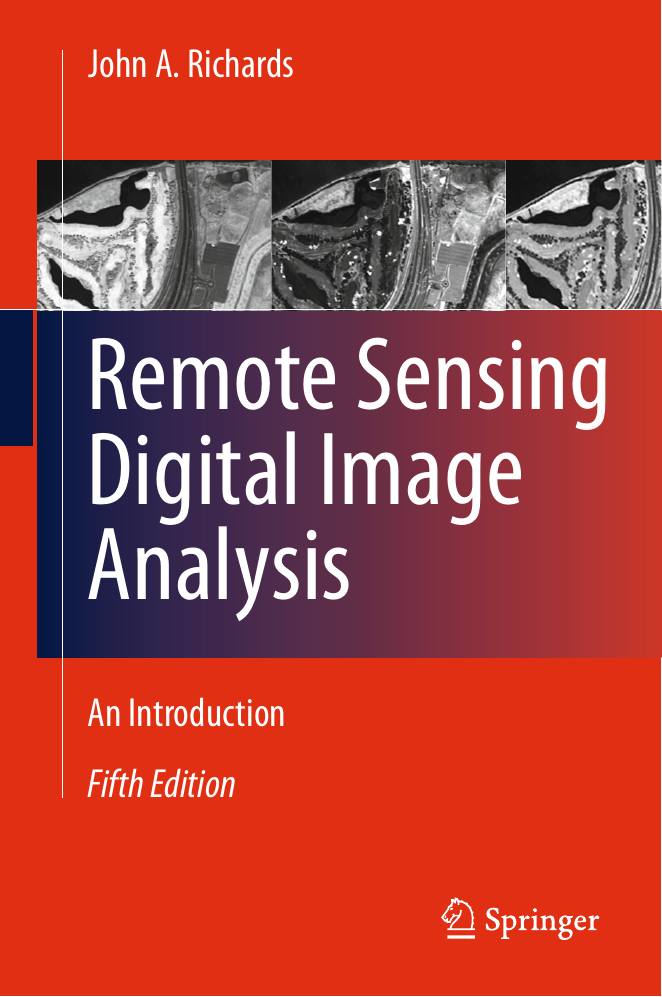
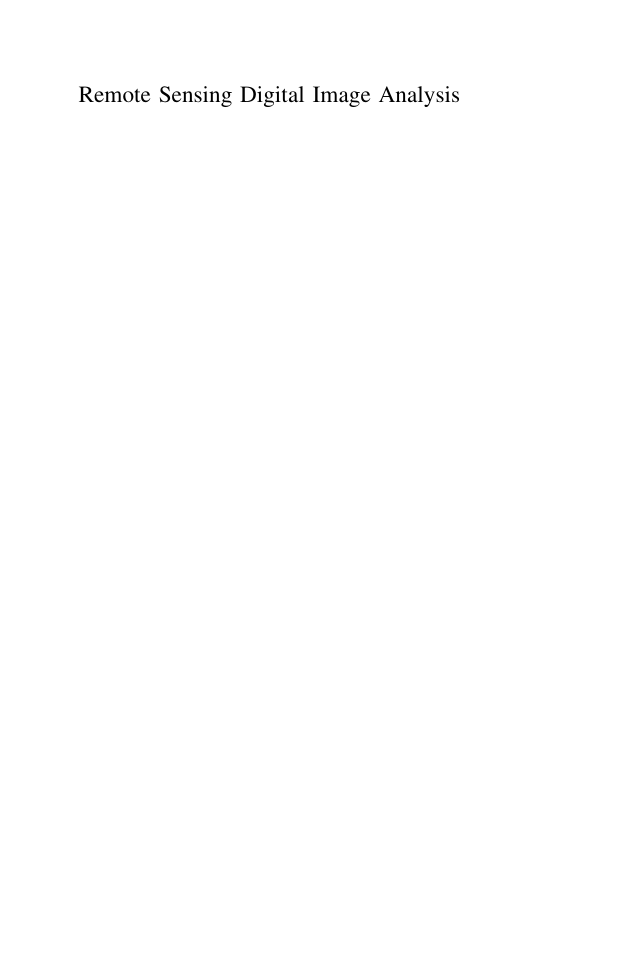
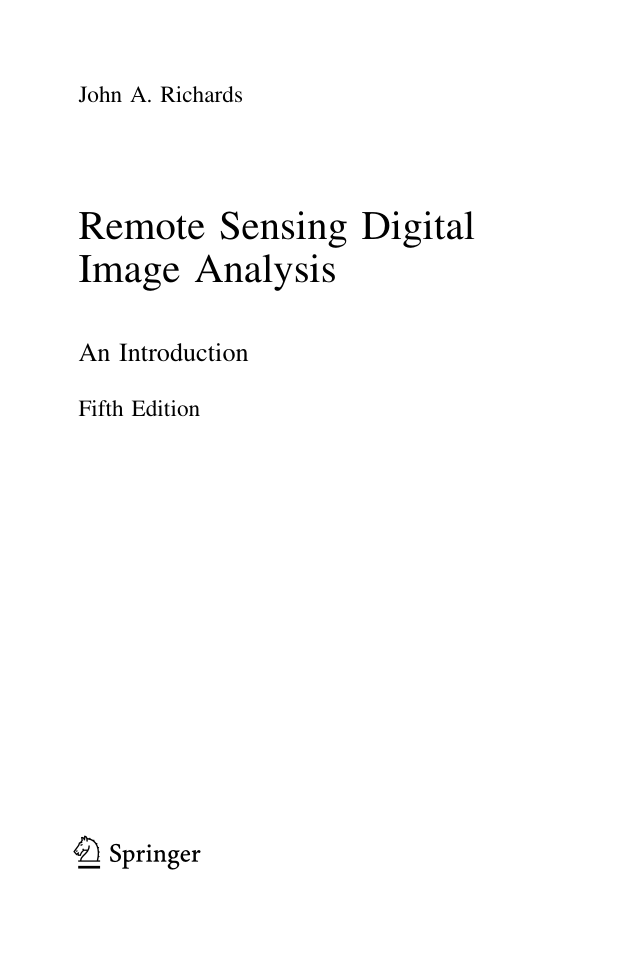
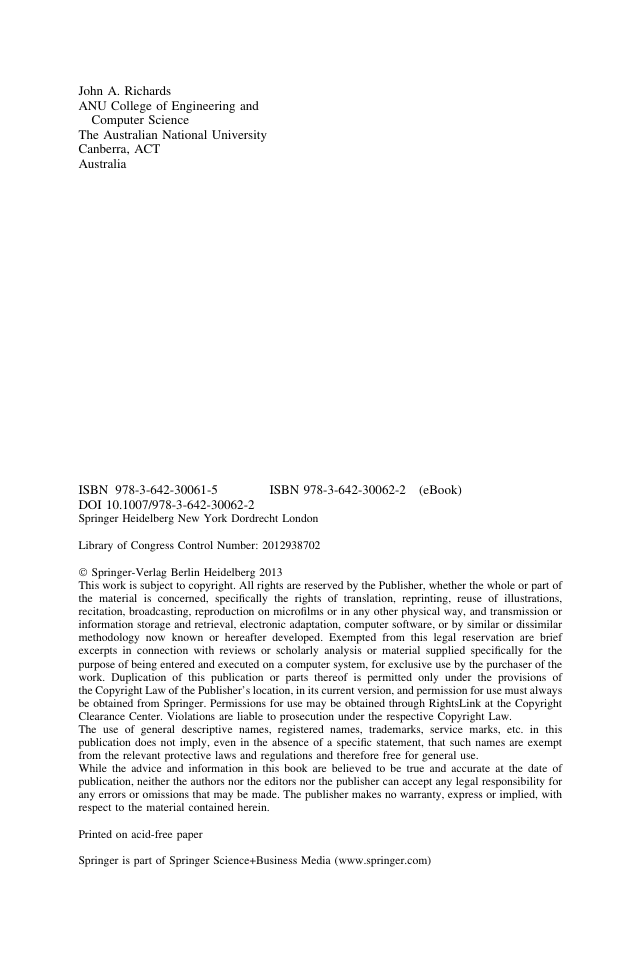

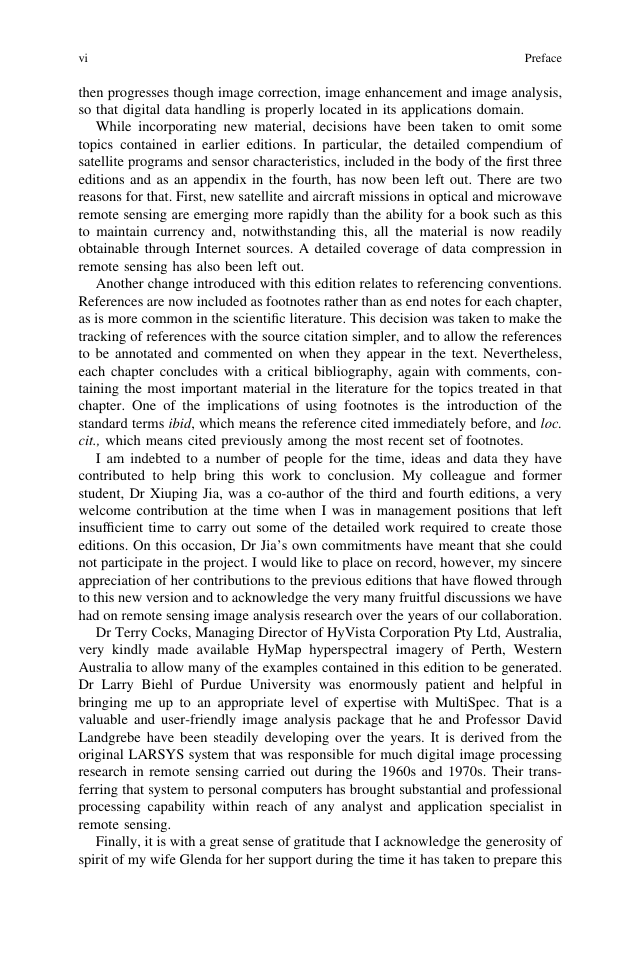
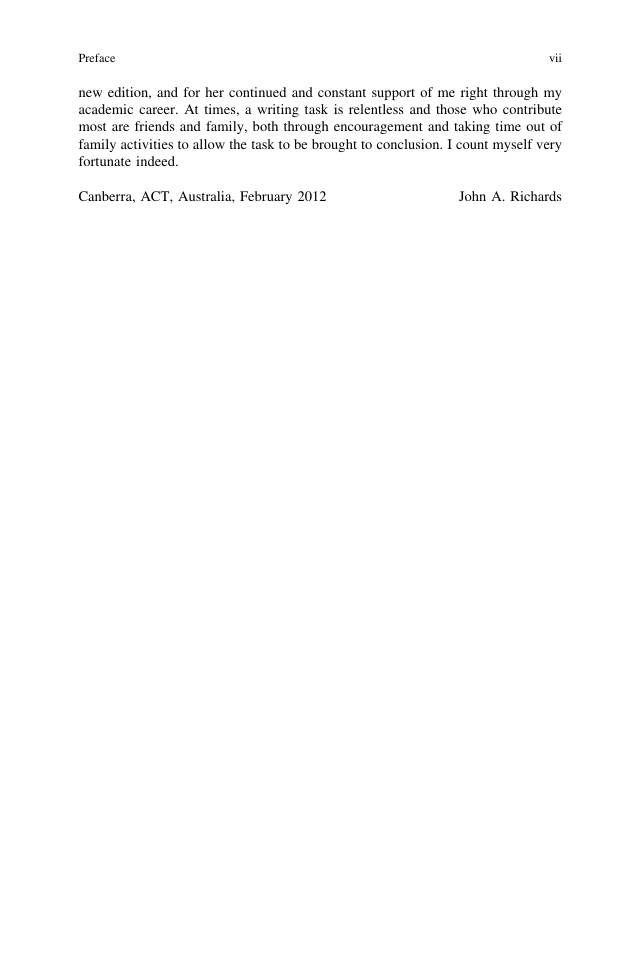
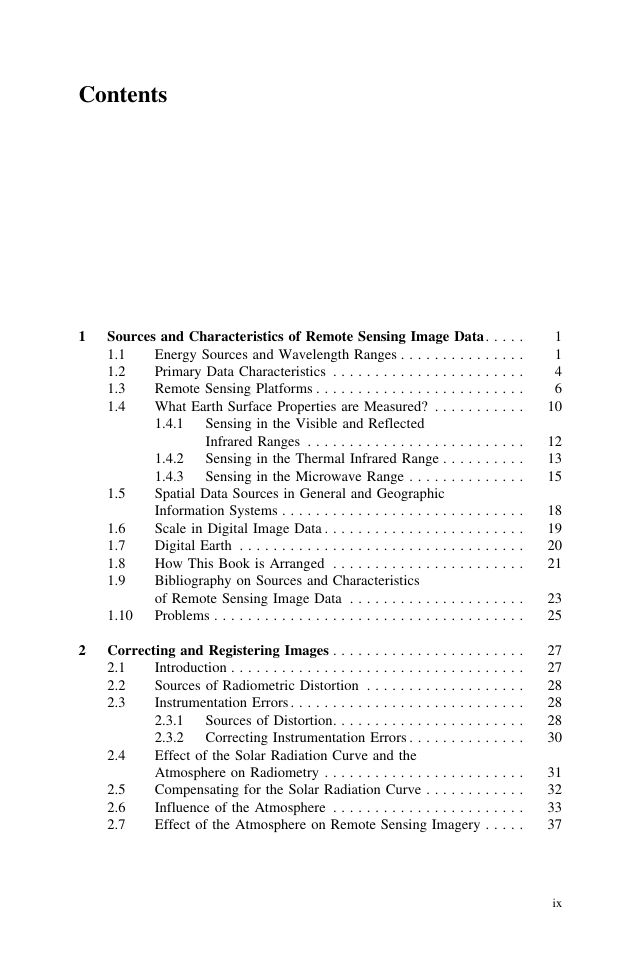








 2023年江西萍乡中考道德与法治真题及答案.doc
2023年江西萍乡中考道德与法治真题及答案.doc 2012年重庆南川中考生物真题及答案.doc
2012年重庆南川中考生物真题及答案.doc 2013年江西师范大学地理学综合及文艺理论基础考研真题.doc
2013年江西师范大学地理学综合及文艺理论基础考研真题.doc 2020年四川甘孜小升初语文真题及答案I卷.doc
2020年四川甘孜小升初语文真题及答案I卷.doc 2020年注册岩土工程师专业基础考试真题及答案.doc
2020年注册岩土工程师专业基础考试真题及答案.doc 2023-2024学年福建省厦门市九年级上学期数学月考试题及答案.doc
2023-2024学年福建省厦门市九年级上学期数学月考试题及答案.doc 2021-2022学年辽宁省沈阳市大东区九年级上学期语文期末试题及答案.doc
2021-2022学年辽宁省沈阳市大东区九年级上学期语文期末试题及答案.doc 2022-2023学年北京东城区初三第一学期物理期末试卷及答案.doc
2022-2023学年北京东城区初三第一学期物理期末试卷及答案.doc 2018上半年江西教师资格初中地理学科知识与教学能力真题及答案.doc
2018上半年江西教师资格初中地理学科知识与教学能力真题及答案.doc 2012年河北国家公务员申论考试真题及答案-省级.doc
2012年河北国家公务员申论考试真题及答案-省级.doc 2020-2021学年江苏省扬州市江都区邵樊片九年级上学期数学第一次质量检测试题及答案.doc
2020-2021学年江苏省扬州市江都区邵樊片九年级上学期数学第一次质量检测试题及答案.doc 2022下半年黑龙江教师资格证中学综合素质真题及答案.doc
2022下半年黑龙江教师资格证中学综合素质真题及答案.doc